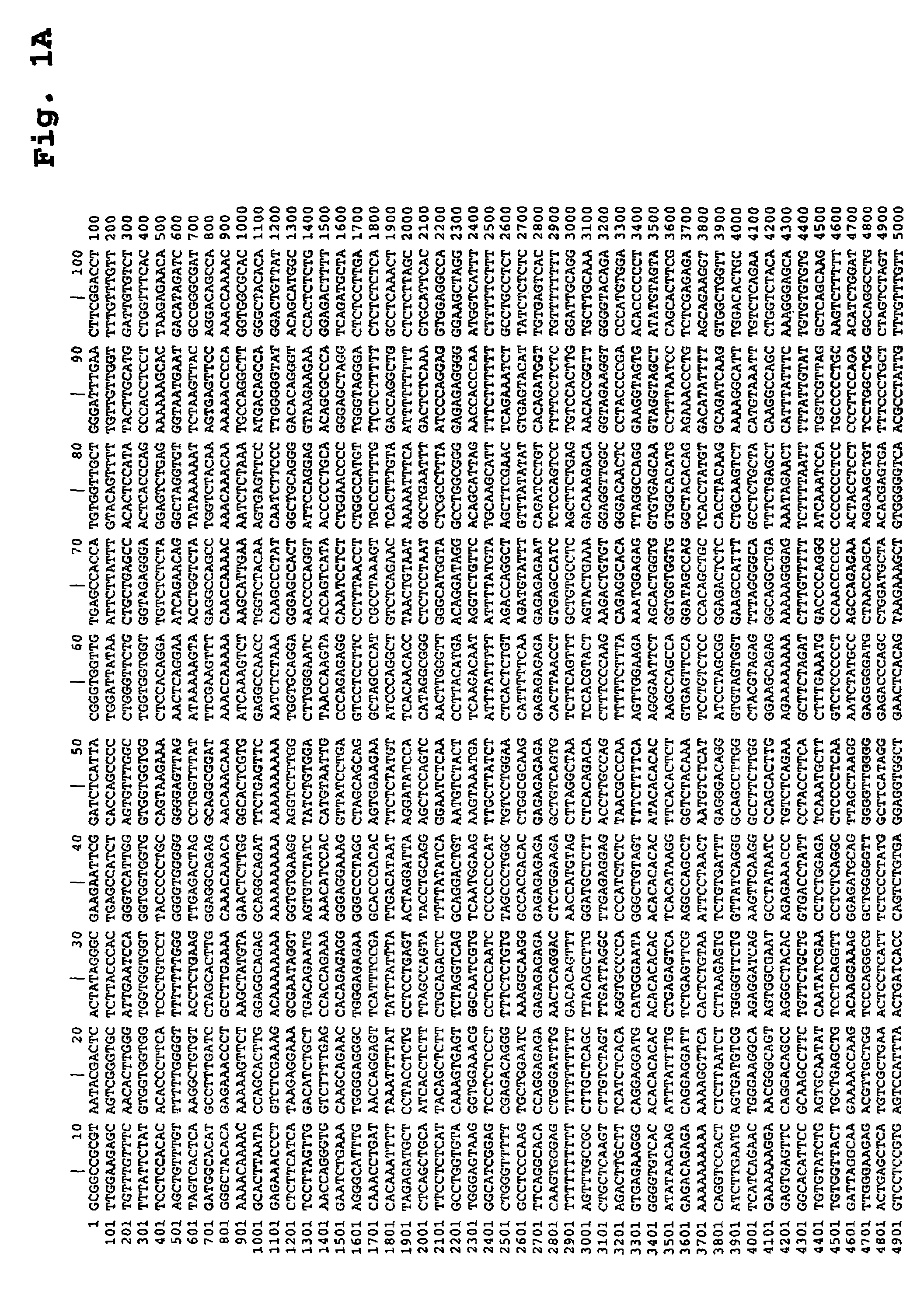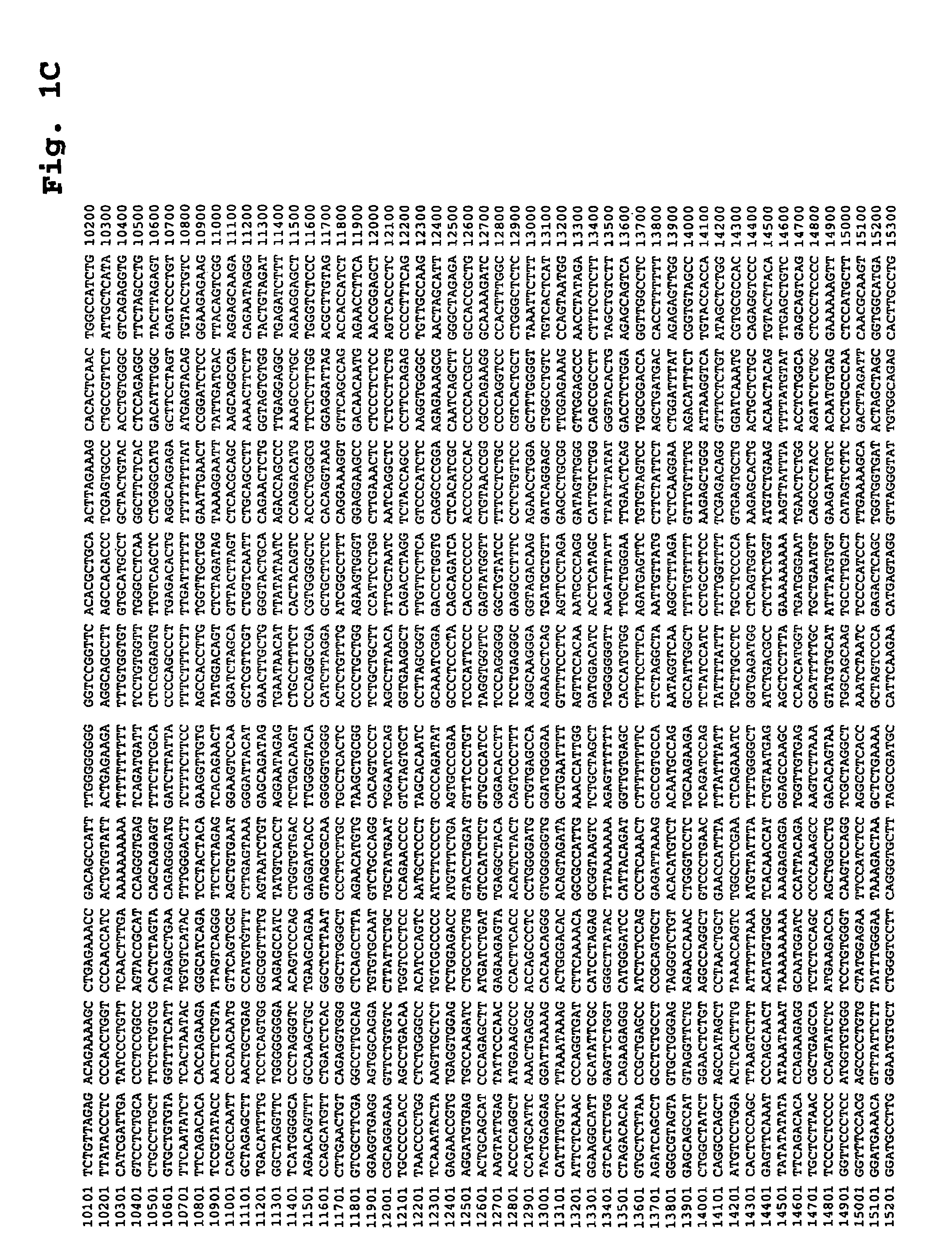Compositions for the derivation of germ cells from stem cells and methods of use thereof
a technology of germ cells and stem cells, applied in the field of cell culture active agents, cell culture, tissue culture, etc., can solve problems such as hampered research progress, and achieve the effect of promoting blastocyst formation
- Summary
- Abstract
- Description
- Claims
- Application Information
AI Technical Summary
Benefits of technology
Problems solved by technology
Method used
Image
Examples
example 1
Generation of GC-Oct4 ES Cells
[0130]After feeder cell removal E14 ES cells were resuspended in phosphate-buffered saline (PBS) at a concentration of 1.25×107 cells / ml. Aliquots (800 μl containing 1×107 cells) were mixed with 50 μg of the 18 kb NotI fragment of pGC-Oct4 and electroporated with a Bio-Rad Gene Pulser II set at 2.5 kV, 500 μF. Cells were plated onto five 10-cm plates containing a confluent layer of Mitomycin C-treated, neomycin-resistant MEF feeder layers in ES cell medium. After 48 hours and two media changes cells Were fed with ES media containing 350 μg / ml G418 to select for GC-Oct4-positive clones. Two weeks after the start of the selection, resistant clones were identified by Southern analysis using specific primers for eGFP (EGFP-D1: 5′-GCAAGCTGACCCTGAAGTTCATC (SEQ ID NO:2); EGFP-R1: 5′-TCAAGCTGACCCTGAAGTTCATC (SEQ ID NO:3)).
example 2
Embryonic Stem Cells
[0131]GC-Oct4 ES cells (E14) were grown on Mitomycin C-treated mouse embryonic fibroblast (MEF) cells on 0.1% gelatine-coated tissue culture plates in D-MEM medium containing 4.5 g / l glucose and supplemented with 15% fetal calf serum (Hyclone) and 1 μm β-mercaptoethanol (β-ME) in the presence of 1000 U / ml murine LIF (ESGRO™; Gibco) or in Knockout D-MEM (Gibco) containing 15% Knockout serum replacement (Gibco), 1 μM β-ME and 1000 U / ml murine LIF (ESGRO™; Gibco).
example 3
Derivation of Early Germ Cells from EBS
[0132]ES cell cultures stably transformed with the GC-Oct4 transgene were depleted of MEF cells and cultured as EBs in Knockout D-MEM (Gibco) containing 15% Knockout serum replacement (Gibco) and 1 μM β-ME, using the “hanging drop” method as described by Wobus et al. (Differentiation 1991 48:173-182). Cells (200-600) in 25 μl medium were cultured for 60 hours (with one media change in case of 500 and 600 cells per drop) and then transferred to bacteriological dishes. EBs were maintained floating in the above medium for at least six weeks without significant change in morphology. Medium was changed every week.
PUM
| Property | Measurement | Unit |
|---|---|---|
| time | aaaaa | aaaaa |
| temperatures | aaaaa | aaaaa |
| temperatures | aaaaa | aaaaa |
Abstract
Description
Claims
Application Information
 Login to View More
Login to View More - R&D
- Intellectual Property
- Life Sciences
- Materials
- Tech Scout
- Unparalleled Data Quality
- Higher Quality Content
- 60% Fewer Hallucinations
Browse by: Latest US Patents, China's latest patents, Technical Efficacy Thesaurus, Application Domain, Technology Topic, Popular Technical Reports.
© 2025 PatSnap. All rights reserved.Legal|Privacy policy|Modern Slavery Act Transparency Statement|Sitemap|About US| Contact US: help@patsnap.com



